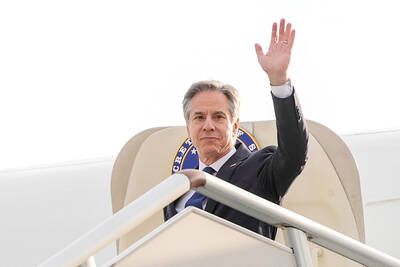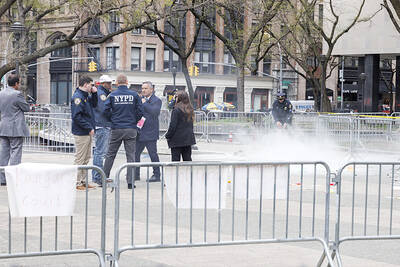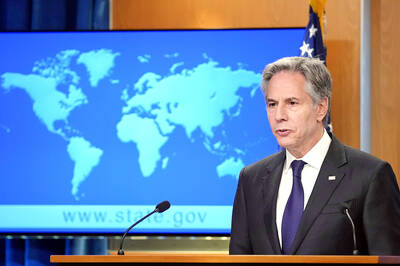Ancient hunters who stalked the world’s last woolly mammoths likely helped warm the Earth’s far northern latitudes thousands of years before humans began burning fossil fuels, according to a study of prehistoric climate change.
The demise of the leaf-chomping woolly mammoths contributed to a proliferation of dwarf birch trees in and around the Arctic, darkening a largely barren, reflective landscape and accelerating a rise in temperatures across the polar north, researchers at the Carnegie Institution for Science concluded.
The northward march of vegetation affected the climate because of the “albedo effect,” in which replacement of white snow and ice with darker land surfaces absorbs more sunlight and creates a self-repeating warming cycle, the study found.
The end of the last Ice Age, marked by a rise in temperatures worldwide and the dramatic retreat of glaciers that once covered much of the Northern Hemisphere, was already under way when the extinction of woolly mammoths began.
But the latest findings, scheduled to be published in the Geophysical Research Letters journal, suggest human activity played a role in altering Earth’s climate long before mankind began burning coal and oil for energy, though the effects of prehistoric hunting were minute by comparison.
If mammoth hunters helped hasten Arctic warming, that would potentially be the first such human impact on climate, preceding that caused by ancient farmers, Chris Field, director of the Carnegie Institution’s Department of Global Ecology and a coauthor of the study, said on Tuesday.
With the advent of agriculture about 7,000 years ago at more southern latitudes, humans are believed to have modified the climate through deforestation and cultivation of new plants, he said.
The research attributes about a fourth of the Arctic’s vegetation-driven warming to the decline of the woolly mammoth.
If human hunters helped kill off the large mammals, they bear some responsibility for warming the climate, the scientists said.
“We’re not saying this was a big effect,” Field said. “The point of the paper isn’t that this is a big effect. But it’s a human effect.”

‘IN A DIFFERENT PLACE’: The envoy first visited Shanghai, where he attended a Chinese basketball playoff match, and is to meet top officials in Beijing tomorrow US Secretary of State Antony Blinken yesterday arrived in China on his second visit in a year as the US ramps up pressure on its rival over its support for Russia while also seeking to manage tensions with Beijing. The US diplomat tomorrow is to meet China’s top brass in Beijing, where he is also expected to plead for restraint as Taiwan inaugurates president-elect William Lai (賴清德), and to raise US concerns on Chinese trade practices. However, Blinken is also seeking to stabilize ties, with tensions between the world’s two largest economies easing since his previous visit in June last year. At the
Nearly half of China’s major cities are suffering “moderate to severe” levels of subsidence, putting millions of people at risk of flooding, especially as sea levels rise, according to a study of nationwide satellite data released yesterday. The authors of the paper, published by the journal Science, found that 45 percent of China’s urban land was sinking faster than 3mm per year, with 16 percent at more than 10mm per year, driven not only by declining water tables, but also the sheer weight of the built environment. With China’s urban population already in excess of 900 million people, “even a small portion

UNSETTLING IMAGES: The scene took place in front of TV crews covering the Trump trial, with a CNN anchor calling it an ‘emotional and unbelievably disturbing moment’ A man who doused himself in an accelerant and set himself on fire outside the courthouse where former US president Donald Trump is on trial has died, police said yesterday. The New York City Police Department (NYPD) said the man was declared dead by staff at an area hospital. The man was in Collect Pond Park at about 1:30pm on Friday when he took out pamphlets espousing conspiracy theories, tossed them around, then doused himself in an accelerant and set himself on fire, officials and witnesses said. A large number of police officers were nearby when it happened. Some officers and bystanders rushed

Beijing is continuing to commit genocide and crimes against humanity against Uyghurs and other Muslim minorities in its western Xinjiang province, U.S. Secretary of State Antony Blinken said in a report published on Monday, ahead of his planned visit to China this week. The State Department’s annual human rights report, which documents abuses recorded all over the world during the previous calendar year, repeated language from previous years on the treatment of Muslims in Xinjiang, but the publication raises the issue ahead of delicate talks, including on the war in Ukraine and global trade, between the top U.S. diplomat and Chinese